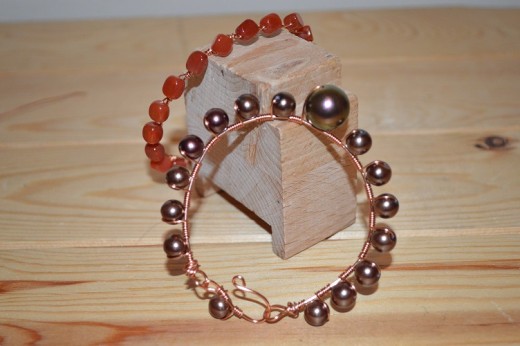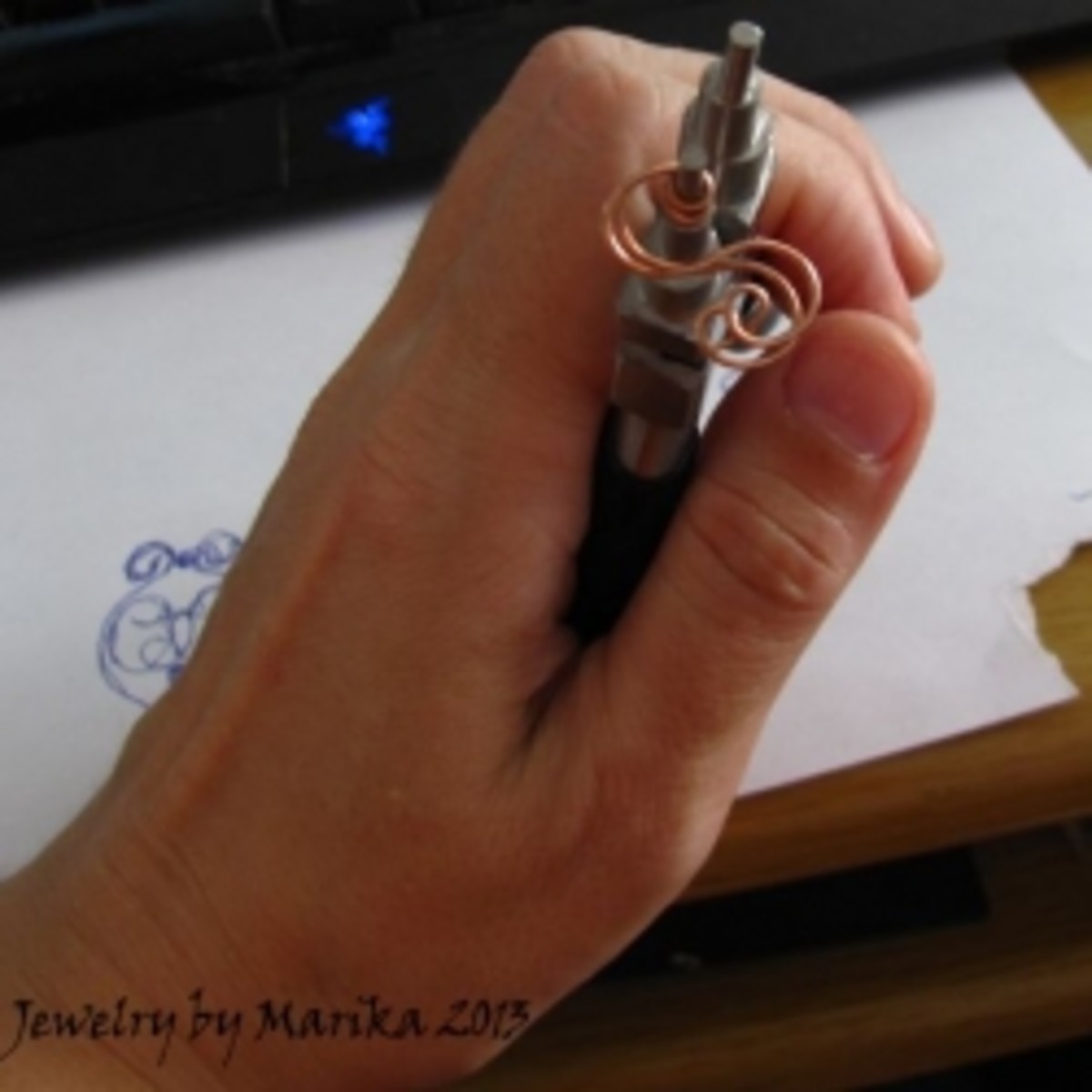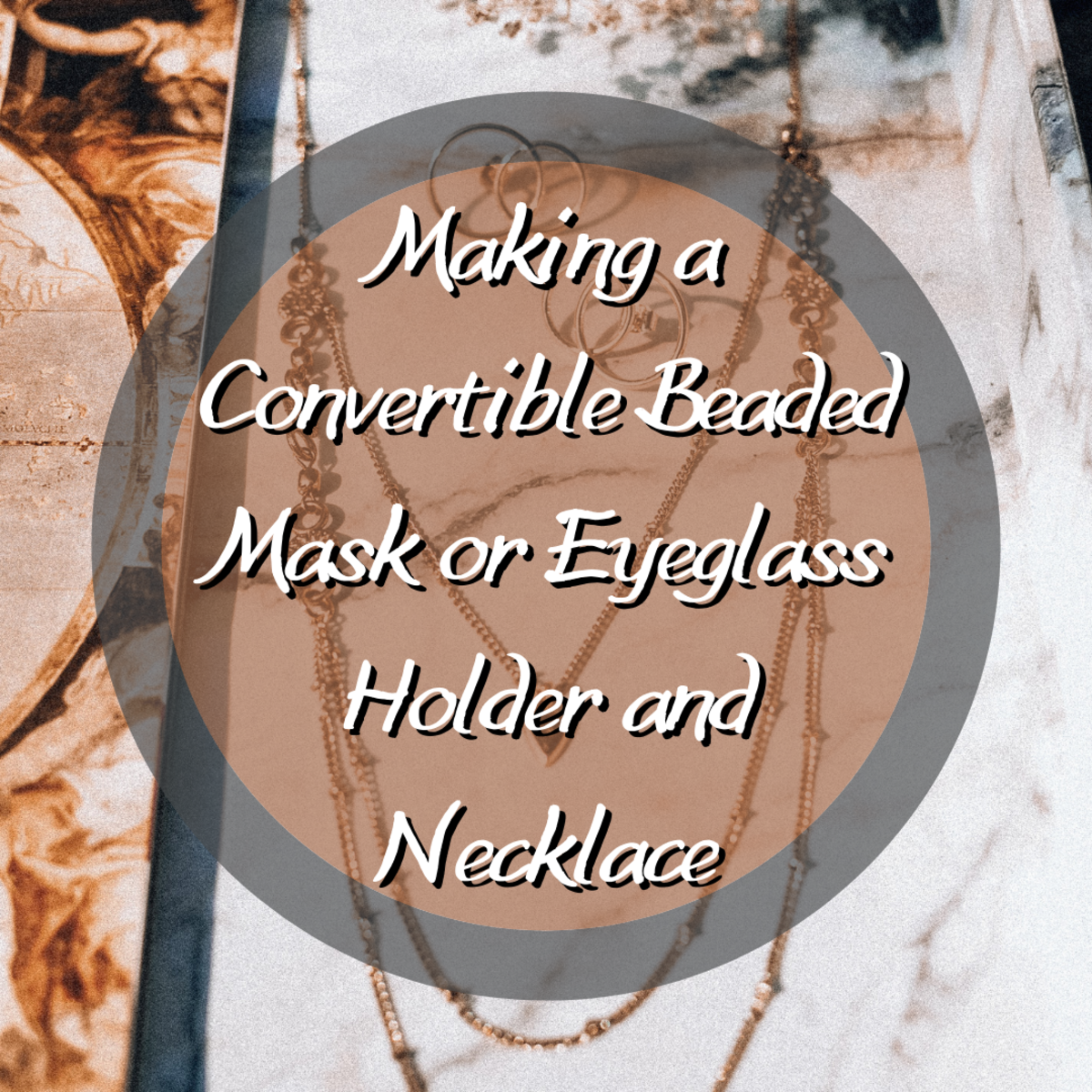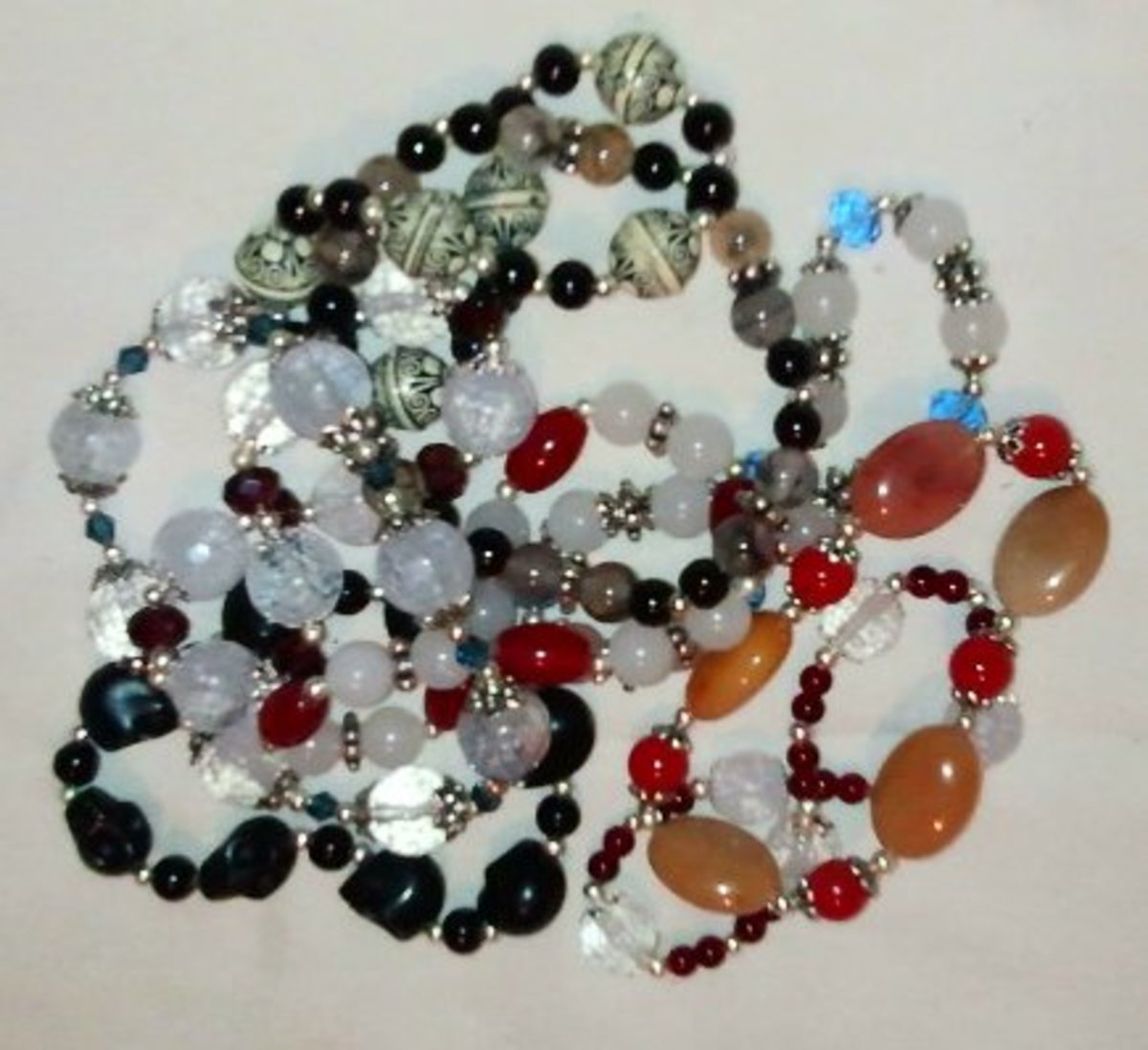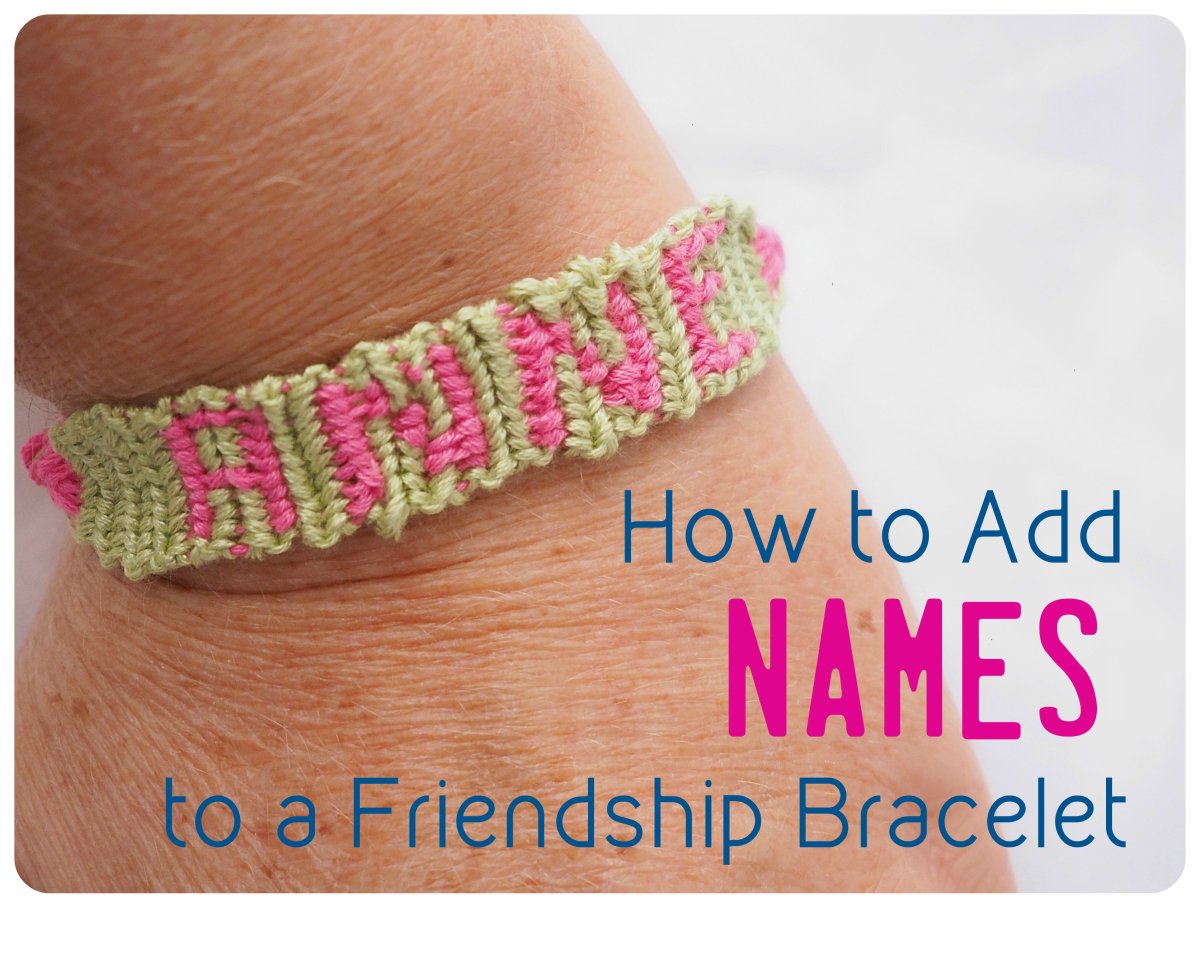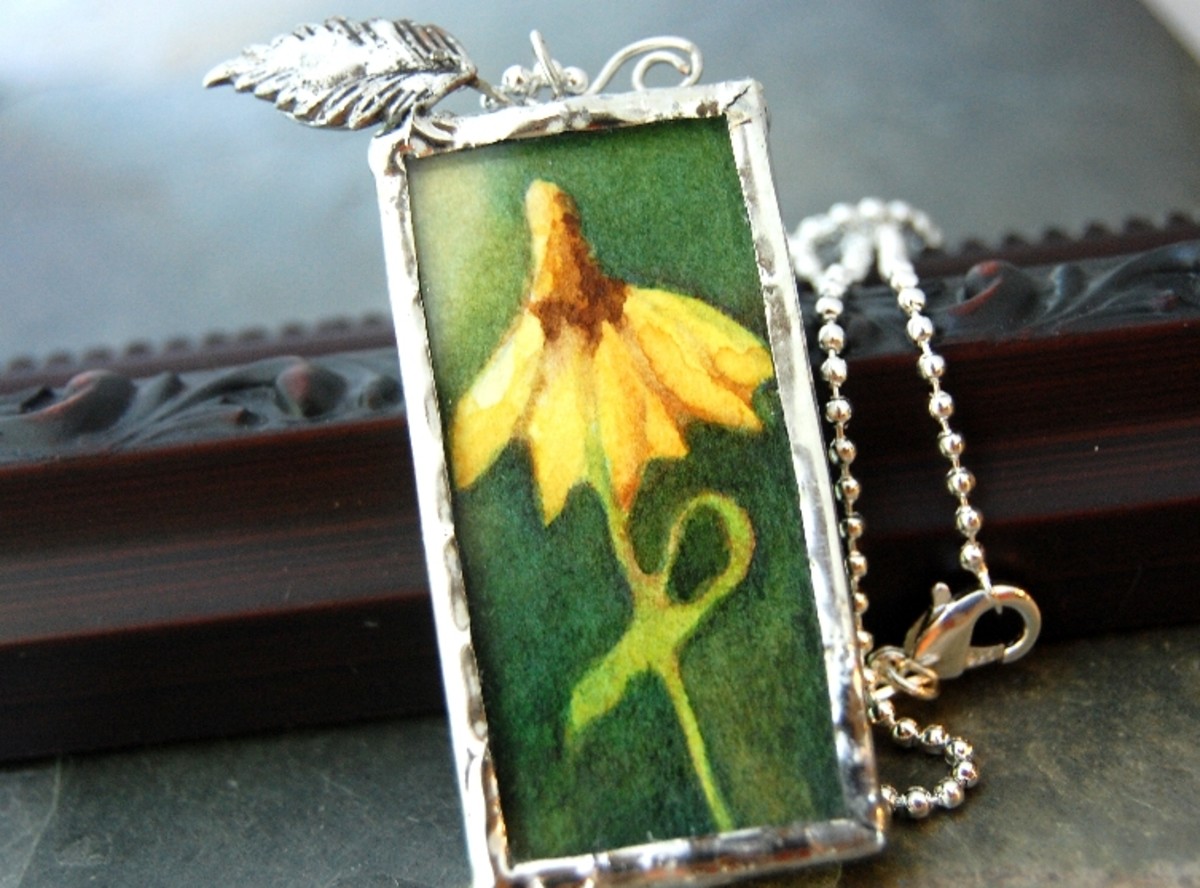- HubPages»
- Arts and Design»
- Crafts & Handiwork»
- Jewelry Making
How to Make a Simple Beaded Wire Bangle. Free Wire Work Tutorial for Beginners
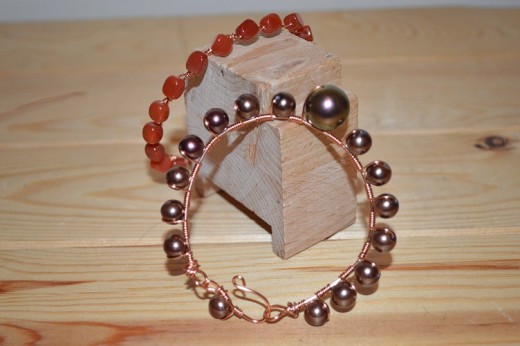
There is something very rewarding about making your own jewellery from scratch, and being able to say 'I made that'. Handmade jewellery makes great gifts for family and friends. It is also a fun way to keep the children occupied during the school holidays.
This easy yet versatile pattern will show you the basics of how to make your own bangles out of wire and beads. I will also show you how to make a decorative clasp to keep your bangle in place
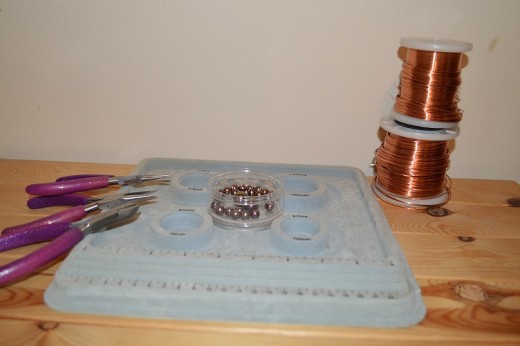
You will need:
1mm gauge wire (18 gauge)
0.6mm gauge wire (22 gauge)
A selection of beads
Wire snippers, Flat nose Pliers and Round Nose Pliers
Optional: A bracelet making board for measuring out and planning your bracelet/bangle
Popular Wire Gauge Conversion Chart
UK
| US
| |
|---|---|---|
0.25mm
| 30G
| |
0.45mm
| 26G
| |
0.6mm
| 22G
| |
1.00mm
| 18G
|
Thicker wire is best for structure, while thinner wire adds detail or is used for attaching beads with narrow drill holes
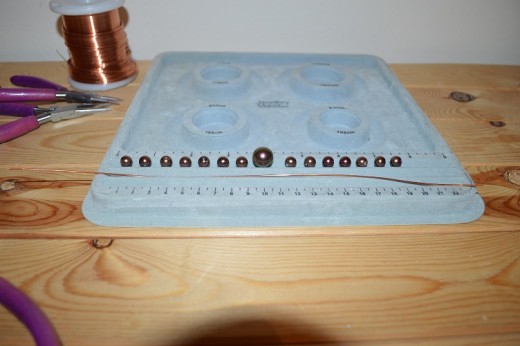
Making the bangle
1. Measure your wrist using a soft or fabric tape measure.
Layout your beads on a bracelet making board (or alternatively lay a tape measure out flat and place your beads next to that), until you achieve a design you are happy with.
Here I have used 8mm round beads and a larger 20mm focal round bead in the middle of the design. I have made my intended design 7" long (including small gaps between the beads). This length is about 1/2" longer than I need, as the design will shrink a little once I start wrapping the beads onto the frame.
Cut a length of the thicker gauge wire that is about 4" longer than your wrist size. So here I have cut a 11" length. This will make the frame.
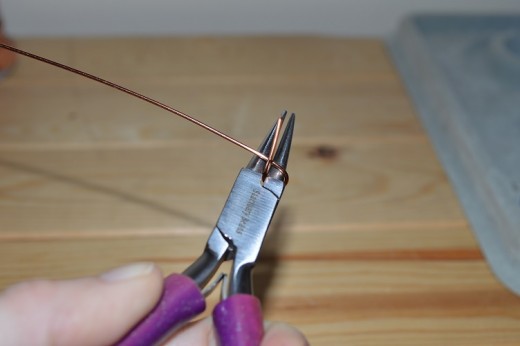
2. Using the round nose pliers, wrap one end of the wire around one prong of the pliers to make a loop about 1" from the end.
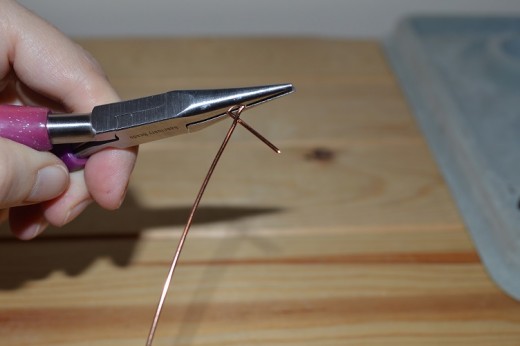
3. Now hold the loop with the flat nose pliers, and wrap the short excess around the base of the loop.
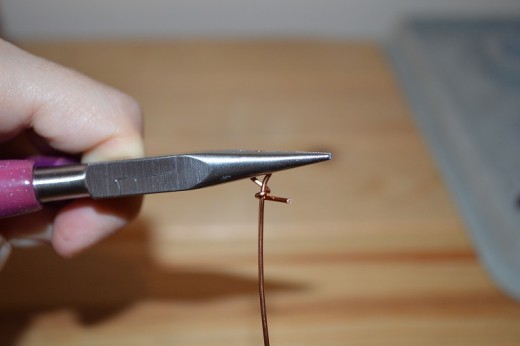
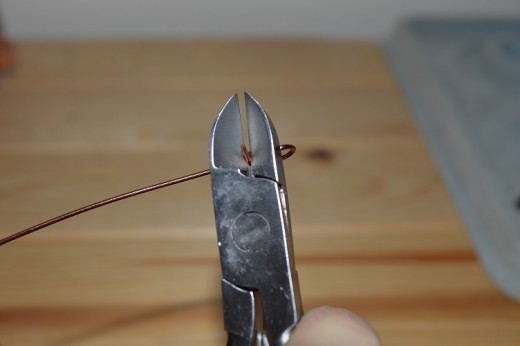
4. Once you have wrapped the excess around the base of the loop a few times it will become too difficult to wrap it anymore, leaving you with a small amount sticking out. Trim this down using the wire snippers.
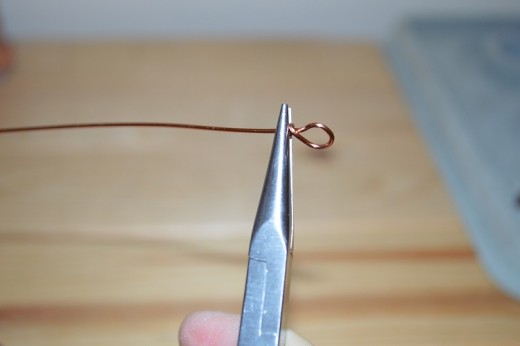
5. You will notice that when you trim the wire, it leaves a jagged end. Using your flat nose pliers, use a half pinching/half rotating in the direction that the wire is wrapped motion. Essentially you are trying to flatten the end down so that it lies neatly against the wrap you made under the loop, so that the jagged end is made safe. Run your fingers over it, if you can still feel a sharp/jagged part then you need to smooth it out some more. Remember this will be against your skin, and you won't want to be irritated or cut by a sharp piece of wire.
Tip - you might find it easier to 'tuck' the end under the wrap you made using the flat nose pliers. Do whichever you find easiest.
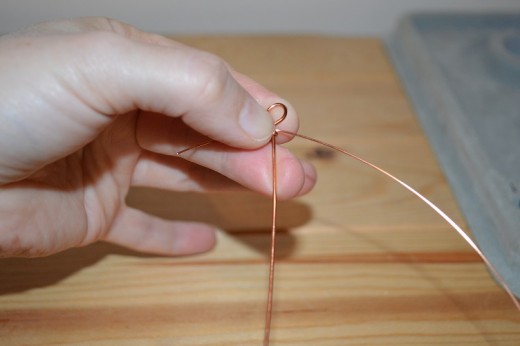
6. Cut a 1m length of the thinner gauge wire. (Be careful of your eyes when using a long length of wire like this)
Hold the wire in position across your frame, just under the loop as shown in the picture. Leave about 1" - 2 " excess (you can just see it under my thumb)
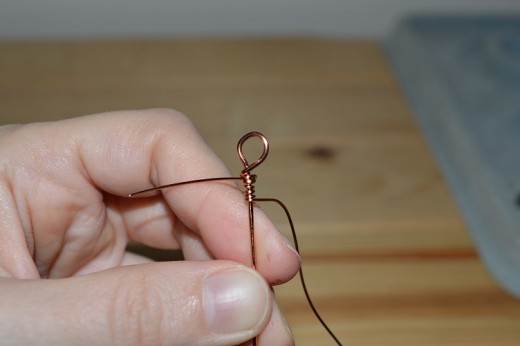
7. Now start to wrap the longer end of the wire around your frame, just under the loop, making a small coil as shown. Ignore the excess for now, we will tidy that up later. (Just be careful that it doesn't scratch you while you work)
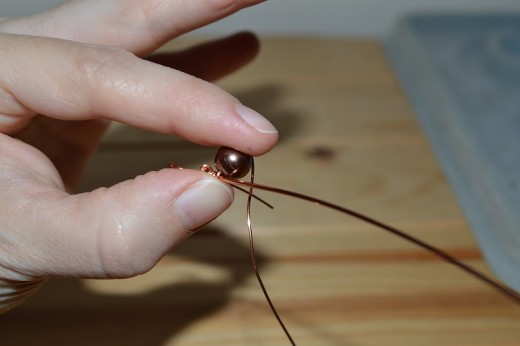
8. Now thread the first bead from your design onto the thin wire, thread it all the way down to the frame, and hold it in position. Pull the wire so that it comes out of the top of the bead, and down the back.
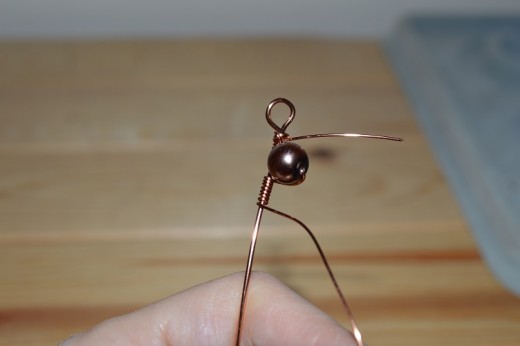
9. Now wrap the long length of wire around the frame making a very neat coil. Try to make sure that each time you wrap around it lies next to, rather than on, the previous wrap. I coiled the wire around 7 times. You can make it more or less if your beads are bigger or smaller than mine. You want the beads to sit in place with even spaces between them, so however many times you coil the wire around at this point, you need to repeat for each subsequent bead you attach to the frame. On the last coil, finish with the wire pointing up, ready to thread on the next bead.
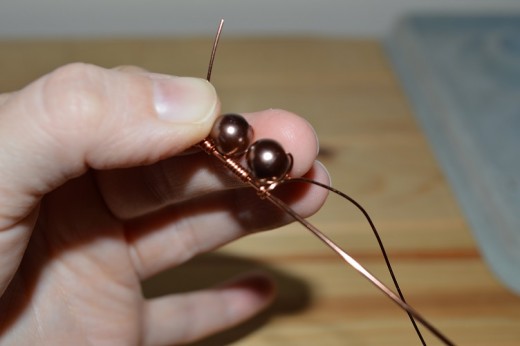
10. Thread on the next bead and repeat the last step.
Keep threading and wrapping until you have added all the beads from your design
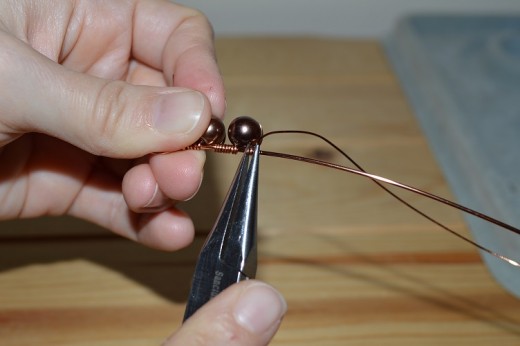
Tip
If small gaps begin to appear between the coils, gently pinch them together using the flat nose pliers. This will help to keep your coils neat and professional.
Also, remember once you have threaded on a bead, to always take the wire down behind the bead and frame. This will mean that the little bit of wire that shows will always be on the same side, and will become a feature of the design.
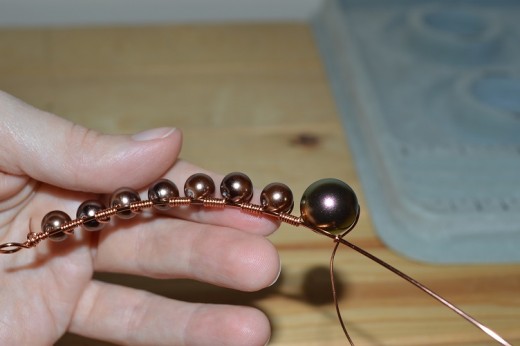
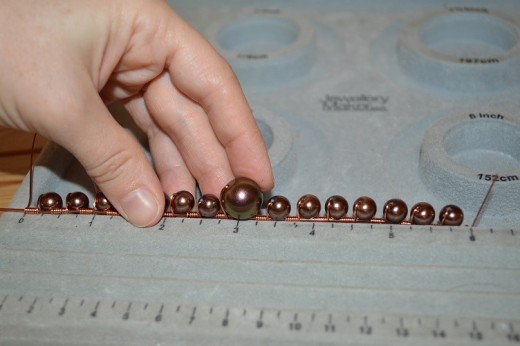
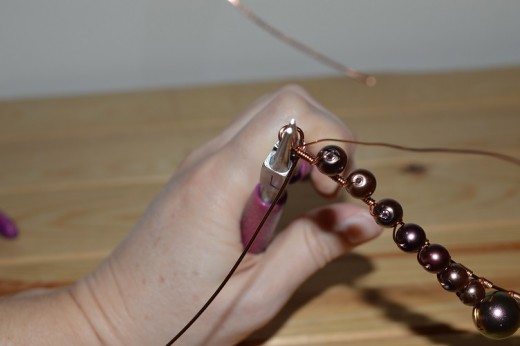
11. Using the round nose pliers, make a loop close to the last coil.
Trim the frame wire leaving approx 1" excess
Repeat steps 3, 4 and 5 wrapping the excess around the base of the loop, trimming it and smoothing it
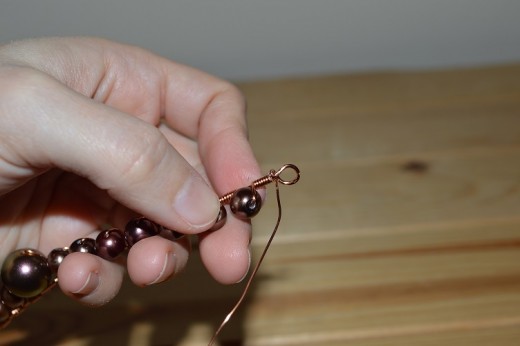
12. Now you need to tidy up the thinner wire that you used to attach the beads.
Trim the wire so that it is approximately the same length as the excess you have left at the beginning end of the frame.
Now wrap the excess wire around the base of the loop, trim and smooth just like with the thicker wire. Repeat for the other end.
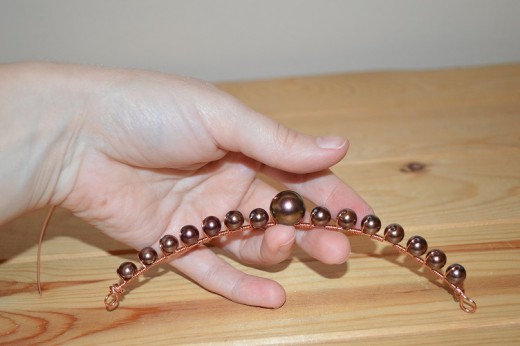
Making the clasp
1. You should have enough of the thicker wire left over from making the frame to make the clasp. About 3" is enough
Using the round nose pliers, make a loop in one end of the wire - make it right on the end this time with no excess. Just place the tip of the wire between the prongs of the pliers and roll the pliers down until it produces a loop.
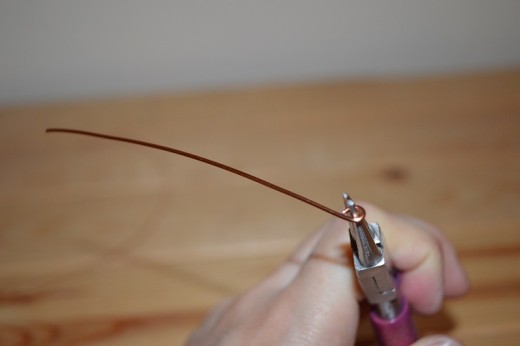
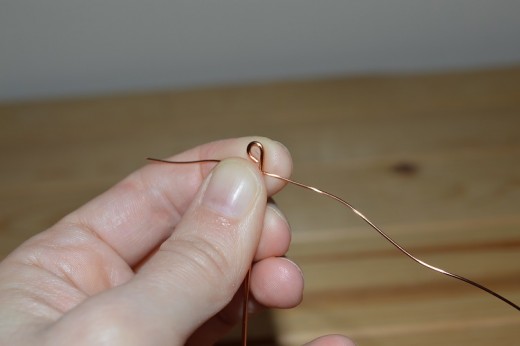
2. Now attach a small length (approx 6") of the thinner gauge wire to the clasp, in exactly the same way as you did in steps 6 and 7 above.
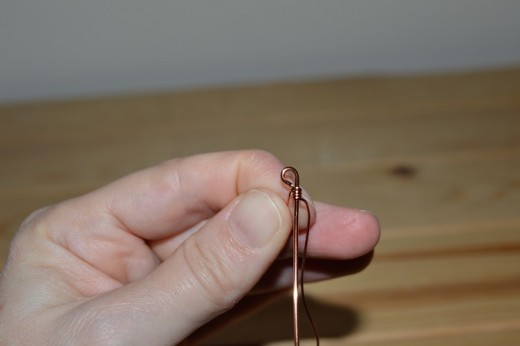
3. Leave a small amount of excess, and coil the end neatly just below the loop you just made.
Add a bead, in the same way as you added them to the frame, and coil the wire some more to secure it in place
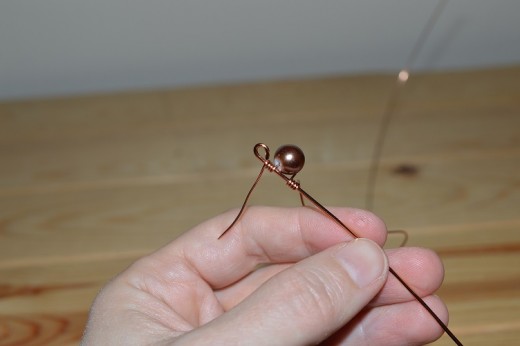
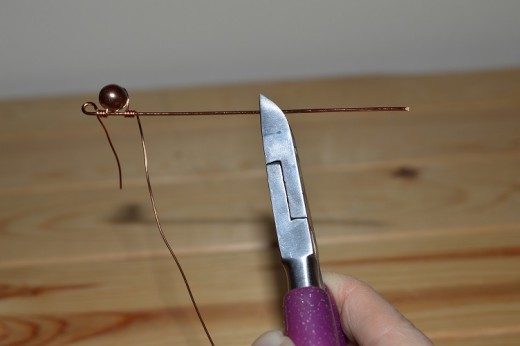
4. If you allowed extra wire to make the clasp, now is the time to trim it. Trim it 2 inches from the end of the coil
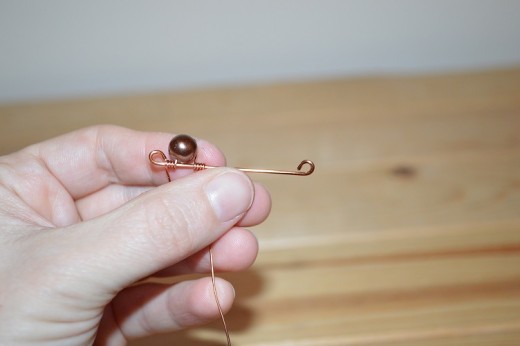
5. Make a loop in the opposite end, repeating step 1, and ensuring the loop rolls up to face the same direction as the first loop.
Then curl the wire around the handle of one of your pliers to make the clasp shape - see photo below.
Curl from the point after the bead, so that the two loops do not meet, but leave an opening instead
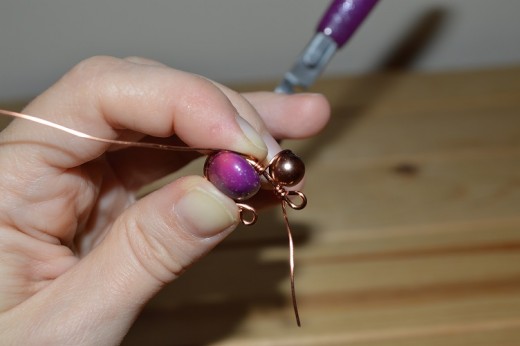
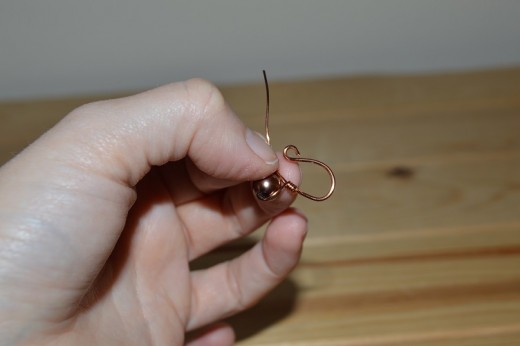
6. Tidy up the end of the thinner wire in the same way as you did on the frame (see step 12 above)
Leave the beginning end of the wire for now
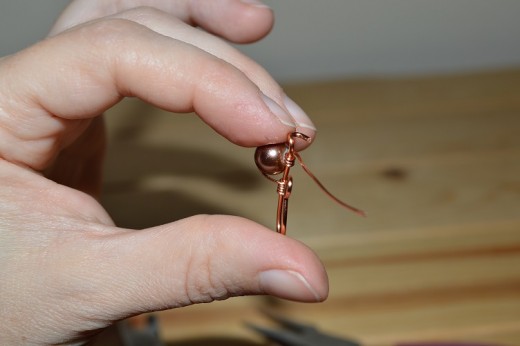
How to open a loop or jump ring
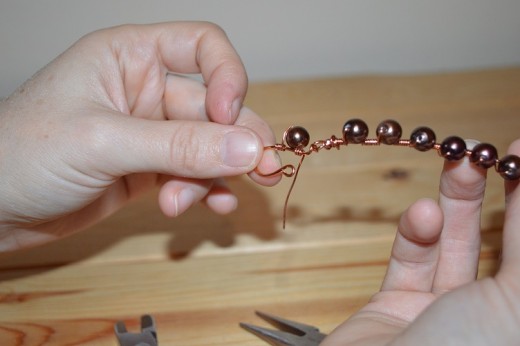
7. Thread the open loop of the clasp through one loop of the bangle frame, and close the loop
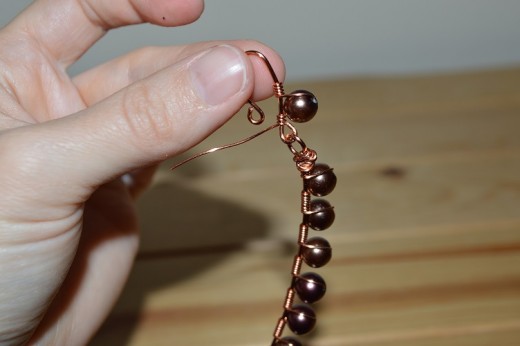
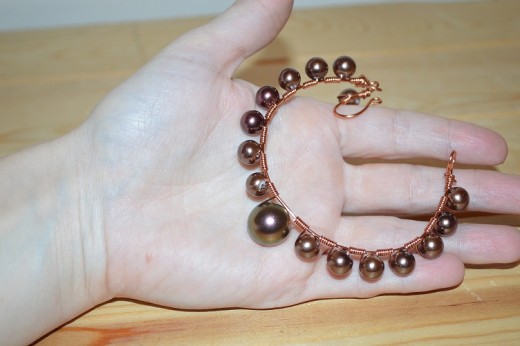
8. Curve the bangle frame around your wrist, or use a jar or can, and the bangle is complete!
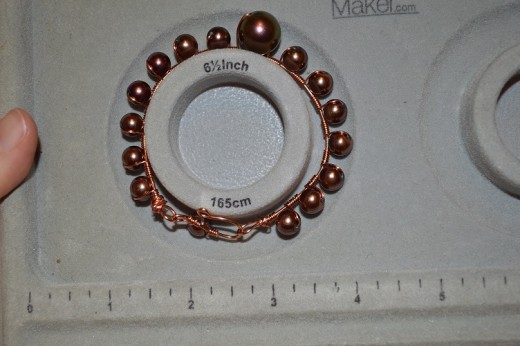
If you are making the bangle as a gift, it is always worthwhile double checking the finished length on your bracelet board
